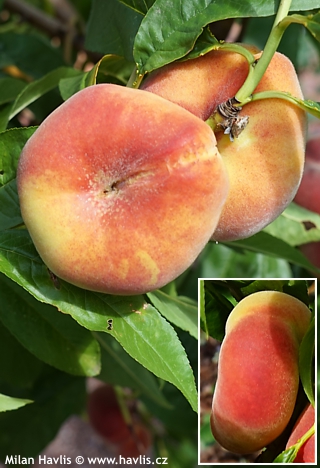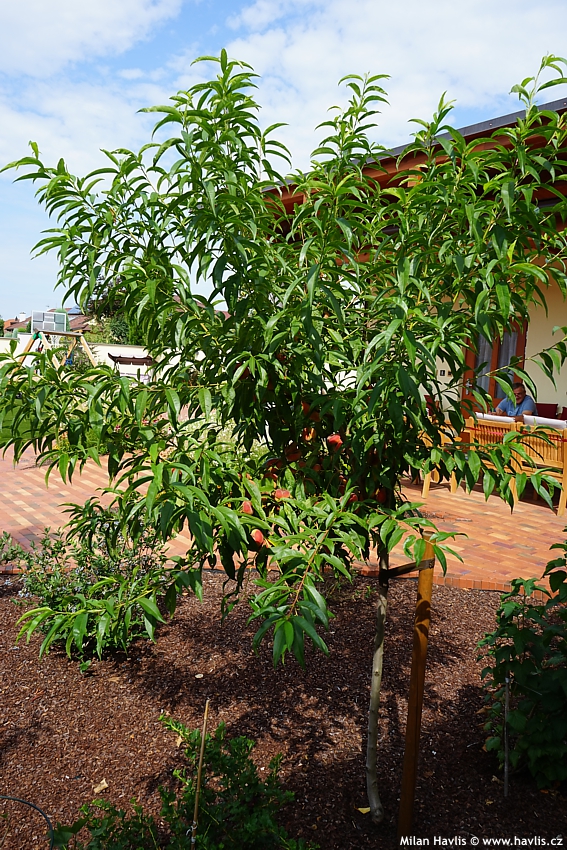Prunus persica var. PLATYCARPA flat peach tree


Flat peach is a delicious type of fruit. It has a flattened (oblate) shape, commonly softly hairy but also smooth (nectarine-like), thinner skin which does not allow long storage. The flesh is clingstone, extremely sweet and juicy, and some say it has a little bit of almond flavour. It may be white or yellow. Currently there are not any accepted variety names and all you come across are made-up names, so we chose to stick to simple English names reflecting its characteristics: White Flesh, Yellow Flesh, Nectarine Yellow Flesh.
They are so easy to grow and we have noticed that they are healthier and more vigorous than classic peach trees. They show great resistance to leaf curl unless in a peach orchard with this infection. Should it appear on your tree try to stay away from a chemical treatment and feed the plant. It will help it make new leaves and ill, curled leaves will fall off (remove and burn them).
We suggest planting peach trees in open spaces so they can feel cold, spring breeze which will delay flowering and prevent the flowers from frost damage should they open too early. They like slightly alkaline soil, moist but well-drained. Do not transplant bare-root trees in autumn, only in spring. We do not recommend pruning but it may be done after flowering. The best yield is always from an unpruned tree which grows naturally. Hardy to about -29 °C (USDA zone 5).
Last update 02-12-2021
Goods are shipped all over Europe. For Russia and U.K. and for further details please read about SHIPPING OPTIONS HERE.
Are you interested in a serious discount for orders NOV-FEB? Check your options here.
THE PRICES INCLUDE VAT of 15%. For quick conversion you can use 1 CZK = approx. 0.04 EUR
- STANDARD QUALITY - Plants of this group are 1st class quality with number of branches and overall density adequate to their size and age, considering they were container grown.
- DE LUXE QUALITY - This label guarantees a luxurious quality of manually selected plants that, compared to their height and age, are exceptionally dense and beautiful.
- EXTRA - These plants are usually mature and bigger specimens with exceptional overall appearance.
- STANDARD (as described in the plant form) means a tree with a trunk of 190-210 cm and a crown at the top, unless specified differently. The commercial size for trees is their girth measured in the height of 1m from ground.
- HOBBY - These plants are of the same quality as our standard-quality plants but younger and therefore cheaper.
- SHRUB - a woody plant with branches growing bushy from the ground level.
- HALF-STANDARD or MINI-STANDARD - a small tree with shorter trunk, its size is usually specified.
- FEATHERED - These are trees with branches growing already from the base of the trunk and up along the stem.
- GRASSES and PERENNIALS - Sizes given usually read the diameter of the pot or the clump, as specified.
















